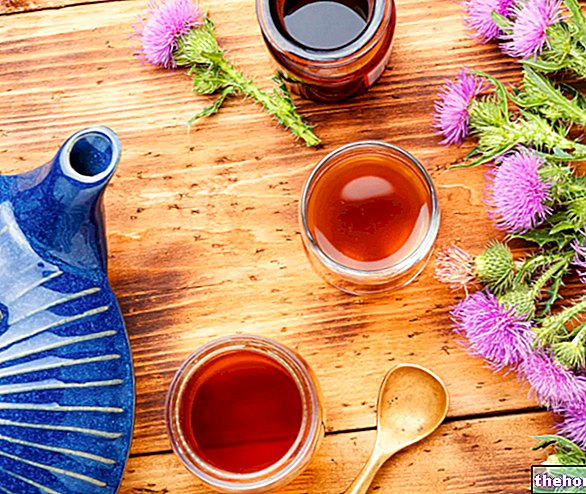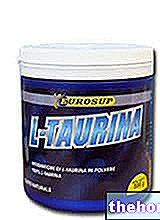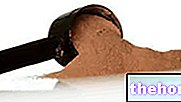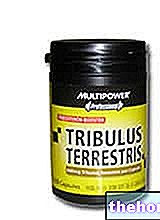What is Guar Gum
Guar is the name of an annual herbaceous plant (Cyamopsis tetragonolobus, fam. Leguminosae) of Indian origin, but also cultivated in various other parts of the world, such as neighboring Pakistan, China and the United States. No more than two meters high, it produces fruits (pods) containing 5-9 seeds from which the famous guar gum is obtained.

Composition
From the chemical point of view it is a hydrocolloidal polysaccharide, mainly consisting of high molecular weight galactomannans; the latter are polymers consisting of linear chains of mannose monomers, branched with monosaccharide units of galactose. Guar gum contains 70-80% galactomannan, a minimum amount of water (10-13%), proteins (4-5%), crude fibers (1.5-2%), fats (0, 50-0.75%) and traces of iron.
Properties and Uses
This product is widely used in the food and cosmetics industry. One of its most interesting properties concerns the ability to absorb considerable quantities of water, with which it forms particularly viscous solutions even when working in difficult environmental conditions; Guar gum is in fact soluble in both cold and hot water and tolerates slight deviations in pH from neutrality very well.All these characteristics, together with the low cost, make it an excellent thickening and gelling agent, particularly used in the cosmetic field. For the good emollient and softening properties of the skin, guar gum is part of the composition of moisturizing creams, cleansers and those dedicated to hair care.
The food industry exploits its thickening, stabilizing and thickening properties in the preparation of numerous products, such as ice creams, sauces, preserved meats and drinks. Its use can be reported on the label in full or with the initials E412.
Guar supplement
A valid ally against diabetes, obesity and high cholesterol
Confirmed by numerous studies, the hypoglycemic virtues of guar gum depend on its ability to regulate the glycemic index of the meal, slowing down and reducing the absorption of carbohydrates; for this reason it represents a very useful complement in the diet of diabetics.
Guar gum is also indicated for those suffering from high cholesterol, given its ability to lower blood levels of LDL.
The intestinal fermentation of this fiber, operated by the local bacterial flora, gives rise to short-chain fatty acids, some of which, after being absorbed, are conveyed directly to the liver. Once here, the short-chain fatty acids carry out their cholesterol-lowering action by reducing the synthesis of cholesterol.
Like all water-soluble fibers, guar gum also has chelating properties. The gelatinous compound it gives rise to in the intestine interferes with the absorption of bile salts, fats and cholesterol, helping to improve the lipid profile of the blood.
Does it make you lose weight?
Guar gum is used in diets globally aimed at controlling or reducing body weight. Its remarkable hygroscopic properties favor gastric distension, consequently inhibiting appetite. In one study, ten grams of guar taken for two months before main meals (for a total of 20 g / day), allowed a group of nine women, with an initial weight between 72 and 109 kg, to lose an average of 4kg each. The researchers also noted a reduction in blood cholesterol and triglyceride levels.
The slimming effect of guar gum appears to be time-dependent and dose-dependent (the longer and longer it is taken, the greater its positive effects on weight loss). However, it is advisable not to exceed the recommended intake doses. , since higher quantities could cause intestinal disorders (flatulence, meteorism) and significantly reduce the absorption of nutrients useful to the body. If taken simultaneously with antibiotics (phenoxymethylpenicillin) it can reduce their absorption.
Finally, if accompanied by abundant quantities of water, guar gum can also prove to be a useful complement in the treatment of constipation.
Partially hydrolyzed guar gums
Partially hydrolyzed guar gums have also recently appeared on the market, indicated with the initials PHGG which, unlike the originals, always remain liquid and do not gel.
Once in the intestine, they act as regulators of water balance, absorbing any excess water (useful in case of diarrhea) or releasing it when the intestinal material is dehydrated (constipation).
Partially hydrolyzed guar gums are indicated to regulate the blood level of carbohydrates, in non-secretory forms of diarrhea and in the case of irritable colon and diverticulosis. Unlike traditional guar gum, they are well tolerated and are not accompanied by particular disorders of gastrointestinal origin. The recommended dose is 5 g / day, to be taken in a single solution.
How to use
The recommended dose is 5-7 grams, to be taken before or together with each meal for a total of 15-20 grams / day.
Select plant Fir Acacia Acerola Sorrel Yarrow Yarrow Yarrow Aconito Adatoda Garlic Agnocasto Agrimonia Alchemilla Alkekengi Aloe Altea Witch Hazel Ammi or Visnaga Pineapple Andrographis Anemone Pulsatilla Angelica Anise Star Anise Japanese Star Anise Bitter Orange Bitter Areca Arnica Harpagophytum Arpagophyte Artemisia Asteragus Basil Asparagus Asparagus Peruvian Asparagus Asparagus Asparagus Hawthorn Boldo Borage Shepherd's Purse Boswellia Bucco Butea superba Cocoa Coffee Cajeput Calamus Calamus Marigold Camedrio Chamomile Roman Chamomile Camphor Cinnamon Ceylon Maidenhair Capuchin Artichoke Cardamom Cardiac Thistle Asian Thistle Carvi Cascara Cassia Catecu Catha Cabbage Celandine Chicory Centaurea Cinnamon Cypress Celandine Chives Cypress Coca Cola Colchico Combreto Condurango Comfrey Coriander Cranberry Barberry American Chrysanthemum Cumin Turmeric Damiana Digital Dioscorea Drosera Dulcamara Dunalilella Echinacea Eder a Ephedra Elenio Eleutherococcus Helichrysum Evening primrose Horsetail Alfalfa Erica Euphrasia Erisimo Escolzia Eucalyptus Farfara Farfaraccio Calabar bean Fenugreek Fennel Phytolacca Frangola Ash Fumaria Japanese Mushrooms Galega Ganoderma lucidum Garcinia Cambogia Mulberry Gentian Broom Ginkgo Ginkgo Guipana Guipana Gynestra Ginkgo Hibelia Gymnasium Hibiscus Guarulp St. John's Wort Horse Chestnut Ispaghul Hyssop Jaborandi Kava kava Konjac Laminaria Cherry Laurel Lavender Lemongrass Lespedeza Lovage Icelandic Lichen Lemon Flax Lippia Licorice Lobelia Hops Maca Marjoram Maize Mallow Manna Marrubio Marrubio d "water Matè Melaleuca Meliloto American Lemon balm Myrtle Myrama Walnut Nutmeg Walnut vomica Olive tree Meadowsweet Ononide Opuntia Oregano Orthosiphon Nettle Poppy Papaya Parietaria Feverfew Passiflora Chilli Perilla Periwinkle Phyllanthus Plantain Picrorhiza Pilosella Pino Pisci dia Podofillo Polygala Grapefruit Parsley Psyllium Pueraria mirifica Butcher's broom Pygeum Quassia Oak Rhubarb Ratania Rauwolfia currant Castor bean Rhodiola Rosehip Rosemary Rue Willow Sarsaparilla Sage Elderberry Sassafras Sedum Ergot Senna Serenoa Repens Soybean Solidago Tansy Taraxus Tamarind Tamarind Tamarind Tamarind Tamarindo Ursina Valerian Vanilla Mullein Verbena Veronica Viburnum Vinca Pansy Mistletoe Vine Withania Yohimbe Saffron Ginger Pumpkin Select disease Juvenile Acne Rosacea Tinnitus Tinnitus Aerophagia Tendon Affections Afonia Aphthae Algias Functional Halitosis Breastfeeding Allergy Anemia Anguish Anxiety Arteriosclerosis Asthrosis Asthrosis Arthritis Arthritis Men Sex Woman Blepharitis and Conjunctivitis Eye bags Bronchitis Gallstones Kidney stones Salivary stones Baldness Androgenetic Candida Fragile hair Caries Headache Cellulitis Motion sickness Cystitis C limaterio Cholecystopathy High cholesterol Ulcerative colitis Colonoscopy Contusions Hematoma Convalescence Couperose Depression Dermatitis Diaper dermatitis Diabetes Diarrhea Erectile dysfunction Dyslipidemia Dysmenorrhea Dyspepsia Disturbances of vision Hemorrhoids Epistaxis Herethism Heart disease Fever Fibromyalgia Gastro-intestinal disease Flatulence Hypertension Fibromyalgia Gastrointomnia Jaundice Laryngitis Renal lithiasis Toothache Sore throat Thinness Menopause Meteorism Mononucleosis Alzheimer's disease Crohn's disease Nausea Vomiting Obesity Dark circles Onychomycosis Osteoporosis Dry skin Periarthritis Piorea Low pressure Prostatitis Psoriasis Colds Breast fissures Anal fissures Gastro-nasal rhinitis Senescence Premenstrual Syndrome Sinusitis Quit smoking Overweight Fatty liver Constipation Stomatitis Stress Cough Triglycerides high Ulcer Burns Nails Brittle flashes Heat Warts Dizziness Properties herbal Tanning Abortive adaptogenic Aphrodisiac bittering analgesic anesthetic anorectics analgesic antacid anti-allergic anti-asthmatic Antibiotic catarrh Anticellulitiche anticonvulsant Antidiaforetiche antidiarrheal edematous anthelmintic antiemetic Antiemorroidarie antiphlogistic Antiidrotiche Antinevrotiche Antioxidants antipyretic antirheumatic antiscorbutic Antiseptic antispasmodic anti-uric Aperitive Flavoring Astringent Balsamic Bechiche Capillarotrope Cardiotonic Carminative Cathartic Caustics Healing Cholagogues Choleretic Dyes Decongestants Deodorants Purifying Diaphoretic Cleansers Disinfectants Detoxifiers Thirst quenching Diuretics Exciting Emetics Emmenagogues Emollients Hemostatic Energies Hepatoprotectors Expectorants Eupepticus Moisturisers Galactosensitizers lanti Hypertensive Hypnotic Hypoglycemic Hypotensive Irritants Laxatives Soothing Narcotic Nerves Nutrients Odontalgic Pectoral Purgative Revulsive Remineralizing Refreshing Rubefacient Scialagoghe Sedative Soporifugas Sneezing Stomachic Stomatics Narcotic Vascular Tightenitis




























